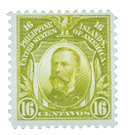
Birth Of Admiral William T. Sampson
US Navy Rear Admiral William T. Sampson was born on February 9, 1840, in Palmyra, New York.
Sampson graduated first in his class from the US Naval Academy in 1861. After graduation, he remained at the academy for a time to teach physics.
In 1864, Sampson was made executive officer of the monitor Patapsco. In that role, he was part of the South Atlantic Blockading Squadron that swept enemy torpedoes away from the Charleston, South Carolina Harbor during the Civil War. In 1865, a torpedo struck the Patapsco, claiming the lives of 75 crew members, but Sampson survived.
After the war, Sampson served on the steam frigate Colorado with the European Squadron. He also returned to the Naval Academy to teach and worked in the Navy’s Bureau of Navigation. Sampson additionally served aboard the screw sloop Congress, commanded the Alert, the training ship Mayflower, and Swatara.
Sampson went to serve as Superintendent of the US Naval Observatory, Officer-in-Charge of the Naval Torpedo Station in Rhode Island, and Superintendent of the Naval Academy. After being promoted to captain in 1889, Sampson was made Inspector of Ordnance in the Washington Navy Yard. Following the destruction of the USS Maine (an event that contributed to the Spanish-American War), Sampson was appointed president of the Board of Inquiry to investigate the explosion.
In March 1898, Sampson received the temporary rank of rear admiral and was placed in command of the North Atlantic Squadron. A month later the US declared war on Spain and shortly after, Sampson set out for Cuba aboard his flagship New York. Sampson supervised the blockade of Cuba and the bombardment of San Juan.
Sampson was then ordered to intercept Spanish Admiral Cervera’s squadron, whose whereabouts were unknown. On May 29, 1898, Admiral Cervera’s squadron was spotted moving into Santiago harbor. The harbor was blockaded to prevent Cervera’s escape.
Sampson was on land on the morning of July 3, 1898, planning a coordinated attack on the city of Santiago. Rear Admiral Winfield Scott Schley was in command in Sampson’s absence. Under Schley’s command, Sampson’s men met and destroyed the Spanish fleet in a five-hour battle. The following day, as America celebrated Independence Day, Sampson sent his famous message, “The Fleet under my command offers the nation as a Fourth of July present, the whole of Cervera’s Fleet.â€
There was no mention of Schley’s leadership in Sampson’s declaration of victory. Soon after, a controversy arose over who deserved credit for this victory. Sampson had laid down the framework for the battle ahead of time and had the ships in the right positions, but Schley had actually commanded the fleet during the battle.
After that battle, Sampson was made Cuban commissioner but shortly after resumed his command of the North Atlantic Fleet. He served as Commandant of the Boston Navy Yard before retiring in 1902.
Sampson died on May 6, 1902. Four destroyers were later named in his honor as well as the US Naval Academy’s Sampson Hall. There’s also a town in Wisconsin named after him.










